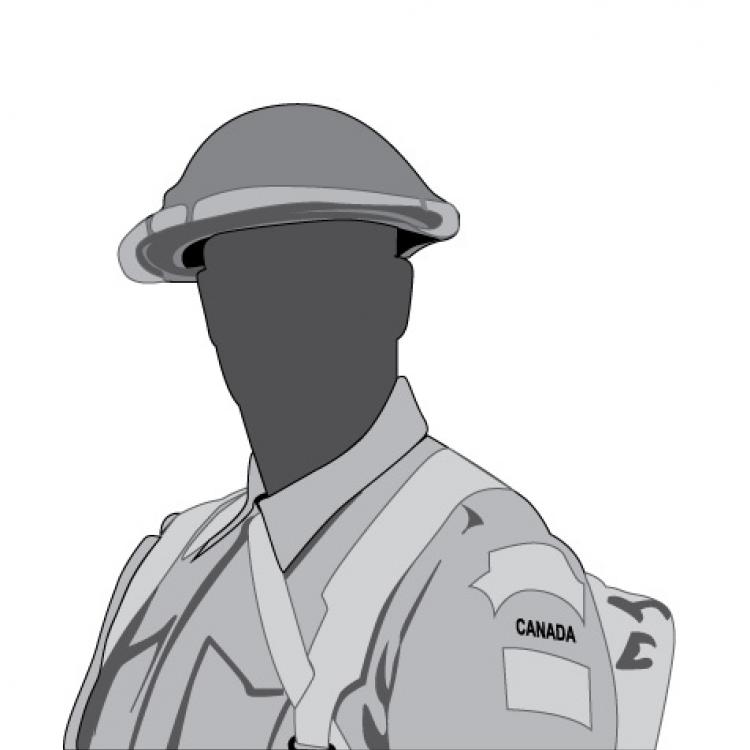DETTMAN, John Egmond
DIVISIONAL UNIT: 1st Canadian Infantry Division
3rd Infantry Brigade
13th Battalion – Royal Highlanders of Canada
1st Canadian Division Trench Mortar Group
3rd Light Trench Mortar Battery
Canadian Infantry Corps
SERVICE NO: 426735
RESIDENCE: Moose Jaw – Saskatchewan
AWARDS: Military Medal
DATE OF BIRTH: May 23, 1892
Howick Township - County of Huron – Ontario
Lot 24 – Concession 17
DATE OF DEATH: November 25, 1920 28 years 6 months
CEMETERY: Clifford Cemetery – Clifford –
County of Wellington – Ontario
WIFE: Mrs. Dorothy Dettman – Clifford – Ontario.
PARENTS: Mr. Henry and Mary Dettman
Occupation: Farmer Religion: Lutheran
Enlistment: Moose Jaw – Saskatchewan – April 5, 1915 into the 46th Battalion
Enlistment Age: 22 years 11 months
John was born in Howick Township at Lot 24, Concession 17.
Following his arrival in England Private Dettman then proceeds to France for service with the 13th Battalion and joins his unit on June 19, 1916. On October 12, 1916, he was attached to the 3rd Canadian Light Trench Mortar Battery.
The Canadian Corps used the Stokes 3” light mortar and this gun used a 3” bomb of about 10 pounds with a modified hand grenade fuse. They could fire 20-22 rounds per minute up to a maximum range of 700 yards. There was no ammunition column for these guns so the infantry was responsible in providing the needed ammunition.
A Battery of light mortars consisted of 8 guns, were manned by the infantry and when fired the bomb followed a high trajectory and as such were very effective against the enemy trenches.
For the raid of February 13th there were 2 heavy trench mortars, 6-6” Newton Mortars and 7-3” Stokes mortars available for the advance. Up until dawn they had fired about 60 rounds. From 6 am on February 13th to 6 am on February 14th the Stokes fired 375 rounds.
February 14th saw the 6” Trench Mortars fire 225 rounds at enemy mortar positions and onto enemy trench junctions and communication trenches. The 9.5” mortars fire 31 rounds onto enemy dugouts and mortar positions as the enemy was firing onto the 13th Battalion positions.
On February 15th the 6” Trench Mortars fired 84 rounds onto the enemy trenches and support trenches plus 30 rounds of harassing fire.
During February 14/15 was when Private Dettman was gassed by the enemy artillery fire and he was admitted to No. 2 Canadian Field Ambulance on February 25, 1918.
Private Dettman in the middle part of May 1918 was awarded the Military Medal for his service in the field. The citation read “ For bravery, resourcefulness and enthusiasm on August 15, 1917. Private Dettman was acting as No. 2 on a gun which was destroyed by shell fire. A counter attack developing while is NCO was away obtaining a new mortar, this private although considerably shaken, took charge of the crew. He dug out the buried ammunition and carried it to a near-by gun, which at thetime was in action against the enemy. This work was done under extremely heavy shell fire.”
Then he was moved to No. 1 Canadian Casualty Clearing Station - Ruitz on February 27, 1918. He then went to No. 4 General Hospital based at Carmiers. It was on March 10, 1918 that he was invalided back to England on the hospital ship
Stad-Antwerpen and then on to No. 1 Southern General Hospital on the same day. Then in early April he was moved to a Military Convalescent Hospital based at Woodcote in Epsom. On May 31, 1918 he became a patient at the Canadian Convalescent Hospital in Shorncliffe. A medical board reviewed his case and noted he had served two years in France and then spent 84 days in hospital and then discharged from Epsom Military Hospital at the end of May. There is shortness of breath, loss of weight and could not carry on with physical therapy. He looks to be tall, anemic looking and under nourished. His heart and lungs look normal but is making no progress with physical activity.
He then transfers from No. 1 Canadian Convalescent Depot to General Duty at Napier Barracks in Witley and then is back at the Convalescent Depot on November 21, 1918. Then he was onto the Canadian Discharge Depot and is brought back to Canada on the S.S. Minnedosa and arrives in St. John, New Brunswick on December 14, 1918. From New Brunswick he is transferred to No. 1 District Depot in London and is discharged from the Canadian Service on January 22, 1919.
John died from the affects of being gassed while he perfomed his duties with his unit on February 14/15, 1918, coming back to Canada and then contacting tuberculosis. His unit was at Bully Crenay. They were assisting the 1st Canadian Division Trench Mortar units with the construction of gun emplacements and also moving ammunition to the front.


